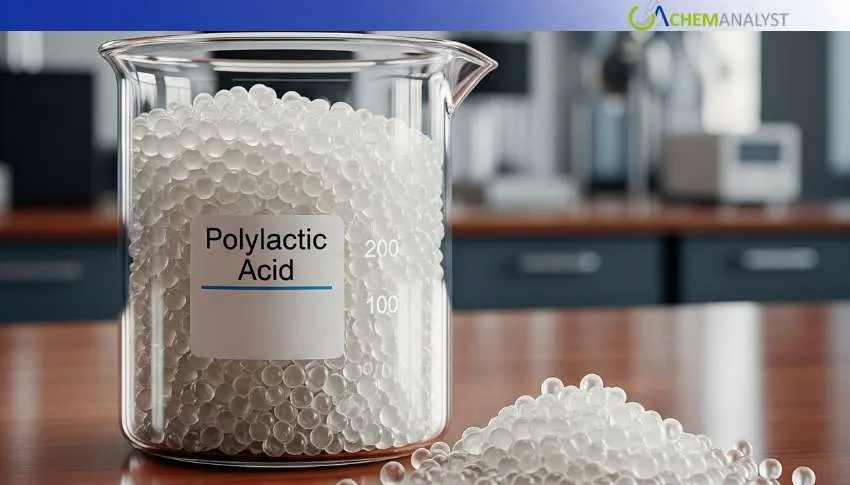Welcome To ChemAnalyst

During the first week of August 2025, European and American Polylactic Acid (PLA) markets parted ways. Europe enjoyed stable prices owing to steady packaging, medical, and 3D printing demand supported by steady supply and decent logistics. Buyers retained careful purchases, keeping inventory in equilibrium. In the USA, prices dipped owing to colossal domestic production complemented by low-cost Asian imports resulting in excess supply. Packaging and 3D printing demand remained strong but not quite robust enough to absorb the overhang. Europe as a whole moved sideways while the US market softened under pressure of supply.
During the first week of August 2025, the USA and European Polylactic Acid (PLA) market experienced diametrically contrasting situations, but on a general level, fundamentals suggested steadiness in long-term demand. Prices in Europe were tight but relaxed marginally in the USA under the weight of adequate supply. The underlying trend in both areas was rising emphasis on sustainability needs, brand commitments, and innovation in more premium uses of PLA that continued to propel market sentiment even as short-term dynamics shifted.
Regional European prices of PLA were firm. Local manufacturers maintained their output levels steadily, wisely equating production to downstream call-offs in packaging, medical disposables, textiles, and 3D printing. Asian imports matched demand, refraining from building up overhangs. Logistics, although occasionally tightened by summer port congestion at times, were in control and never caused delivery schedules to be delayed. PLA Demand was balanced, with packaging converters securing sustainability-themed tenders and steady activity in biomedical and textiles business. Evenly balanced fundamentals of secure supply and consistent offtake ensured sideways price, with buyers avoiding speculative stockpiling.
In the United States, however, the PLA market saw modest price declines. Abundant domestic production, coupled with a strong flow of Asian imports, created an oversupplied environment. Packaging and 3D printing distributors purchased cautiously, keeping adequate inventory on hand and waiting for more price cuts. Ocean freight rates on both coasts eased somewhat, placing competitive pressure on local suppliers. Despite strong feedstock lactic acid prices, which offered no support for PLA price increases, sellers were forced to make downward revisions in offers in order to stimulate activity. The surplus encouraged buyers' market conditions, which strengthened weak pricing momentum.
Aside from short-term prices, demand narratives in both regions were supported by sustainable policies and state-of-the-art innovations. In Europe, POLYBIOSKIN innovations in skin-contact biopolymers reaffirmed PLA's value-added in medical and hygiene applications. The project proved the scalability of PLA, its reduced carbon footprint—approximately 85% below mainstream plastics—and its potential for circular economy strategies. In the US, scientists at Washington University developed LEAFF biomimetic films, a new-generation PLA-based product with soil-degradable properties, increased strength, transparency, and barrier performance. This breakthrough addressed long-standing bioplastics challenges, opening more opportunities for sustainable packaging adoption.
In the future, the short-term perspective indicated that European prices would be stable with help of controlled supply, while American markets could also continue to be under pressure if there were still concerns of oversupply. However, both regions' long-term prospects were solid, backed by regulatory support, company net-zero promises, and innovation to make PLA a leading bioplastic in the circular economy.
We use cookies to deliver the best possible experience on our website. To learn more, visit our Privacy Policy. By continuing to use this site or by closing this box, you consent to our use of cookies. More info.
